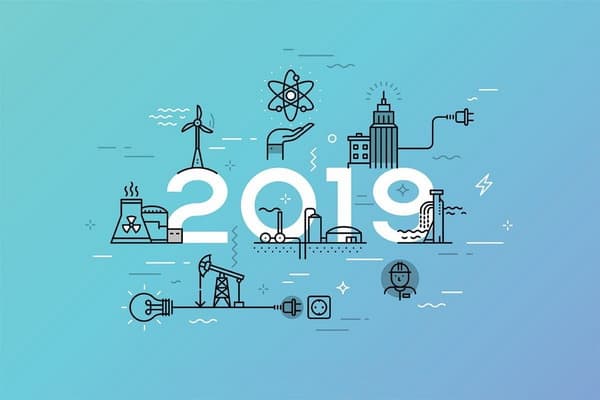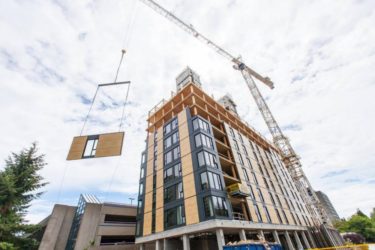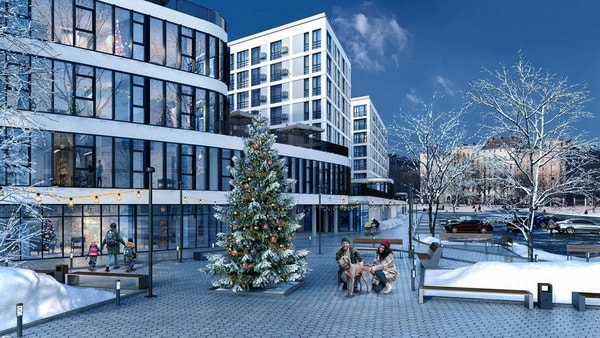
1. Integration of Technological Achievements into the Construction Process
Technology is constantly evolving, and this is certainly a trend that we will never see. Currently, the construction industry, like many project management solutions, is starting to integrate technologies to achieve a smarter and better way to plan.
In addition to software, the construction industry sees great advantages in using drones. These drones are useful for obtaining aerial photographs and video recordings of the landscape and building structures. It can also be helpful in addressing security concerns and risks.
Another technological advancement that makes building work easier and safer is a 3-D printer. This smart device provides increased design flexibility without compromising structural integrity. It can be used for a test drive or design changes and allows you to simplify the design of prototypes, shapes and a variety of materials.
2. Increased focus on sustainability
Most new buildings and facilities are undergoing redevelopment. According to research, green buildings will remain the main trend in the construction industry in 2021. Green building is a way of building in an environmentally responsible and resource-saving way. The commercial development industry is likely to witness an increase in the volume of secondary reconstruction, as well as the reuse of waste in new designs.
In recent months, we have seen the use of coal scrubbers on building facades, recycled cigarette butts, and heat-driven air conditioners. The increased use of green spaces on facades in commercial buildings will also be a common feature, as more and more builders recognize the benefits, including improved energy efficiency.
3. The increase in prefabricated and modular construction projects
Modular construction companies are gaining popularity for the speed with which they can build residential and commercial buildings. Frame construction is a process in which a building is built off-site using the same materials and standards as ordinary objects.
The use of prefabricated structures – assembly of structural components at the factory – is both energy-saving and cost-effective, and probably because of this its popularity will increase. In 2021, get ready to see more modular and pop-up buildings, as well as prefabricated houses.
4. Improved equipment and safety measures
In an industry with more accidents and work-related accidents than any other industry, there is an increased need for more effective safety measures. Following this knowledge, a new wave of technologies has emerged to make building sites safer.
Expect to see homes that can connect to Wi-Fi and send GPS coordinates if the owner crashes or is in trouble. The technology used in work vests and clothing also increases the comfort and safety of workers, thanks to moisture-absorbing and cooling fabric, to keep them cool when exposed to elements.
5. Emergency response facilities
Structural sustainability will be a key focus in 2020 due to increased natural disasters around the world and a growing emphasis on building safety. Generally speaking, building code will no longer be enough. Instead of focusing solely on energy-efficient homes, builders will now look at building homes and buildings that are more resilient to natural disasters, while using low-carbon materials and systems.
Companies like Projex help residential and commercial buildings become more protected from natural disasters by offering the highest available waterproofing solutions.
6. Virtual reality
Augmented and virtual reality technology is not just for entertainment. In 2020, one of the main trends in the industry is a design change between project participants before construction begins.
Using virtual reality, teams can easily detect errors at the design stage and avoid costly errors. Virtual reality can also be incorporated into design and training, making it a key way to provide important safety information on the site. New technologies and mobile phone capabilities have made the technology even more affordable, and it will become a prominent feature in the coming years.
7. Growth of expenses
Over the past few years, there has been an increase in material costs in the construction industry, and, unfortunately, this trend is likely to continue in 2021. Because of this, prices are expected to remain high. Construction companies must prepare to stay competitive in the industry, as well as adopt new technological trends to make their workplace more efficient and reduce costs.
8. Labor Reduction
Job shortages remain a concern for the entire construction industry. Reducing real estate investment is a serious problem for many job managers. Insufficient technical training exacerbates this problem, along with an increase in the number of young people looking for other career paths instead of building.
To combat this, construction companies and managers should pay attention to offer ongoing on-site training to enhance their skills and competencies. While the construction industry is constantly growing and in demand, growth will be slower than expected.
9. Adaptive reuse
Adaptive reuse is another important trend that will consolidate and accelerate next year. This process of restoring the structure, rather than destroying it, is an effective way to accelerate economic development by breathing new life into an abandoned or old building. This trend is becoming increasingly popular: old factories are turning into residential apartments or warehouses, turning into office space.
10. Project management software
Construction project management software is a trend that emerged in 2021. Companies can now develop their own modules for their project management solutions and can effectively navigate equipment rental, change orders, improve time management and other important aspects of traditional project management options. As accessibility has been improved by advances in technology, more and more people can now access the same software, making it easier to understand their role. Modern project management software provides real-time communications, making logistics smoother and more time-efficient.




